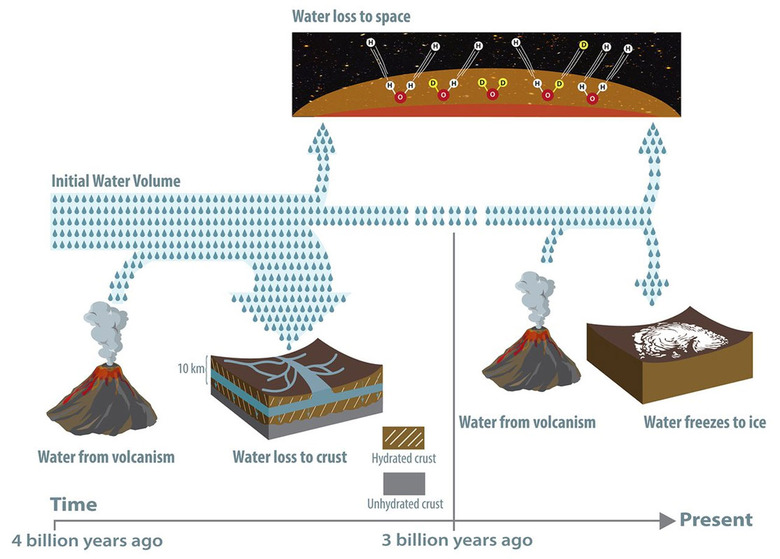Scientists Have A New Theory On Where Mars' Water Went
Scientists know that the Red Planet was significantly more wet and blue billions of years ago than it is today. There's evidence of abundant water flowing across the planet forming pools, lakes, and oceans. Scientists have wondered where all the water went. The predominant theory has been that all of the water on Mars escaped to space over a vast amount of time. However, a new theory challenges that long-held theory of where all the water went.
According to researchers at Caltech and JPL, a significant amount of the water that was previously on the surface of Mars, between 30 and 99 percent of it, is trapped within minerals in the planet's crust. The team found around 4 billion years ago Mars was home to enough water to have covered the whole planet in an ocean between 100 and 1500 meters deep. That would be volume approximately equivalent to half of the Atlantic Ocean.
However, about a billion years later, the planet was as dry as it is currently. In the past, researchers believed that the water had escaped to space because of the low gravity on Mars. While the new study suggests some water did leave Mars via that method, it appears that all the water couldn't have escaped that way. Researcher Eva Scheller, the lead author of the paper, says atmospheric escape doesn't fully explain the data now available for how much water once existed on the planet.
The researchers studied the quantity of water on Mars in all forms, including vapor, liquid, and ice, along with the chemical composition of the planet's current atmosphere and crust through analysis of meteorites and data provided by rovers and orbiters. Particularly, they looked at the ratio of deuterium to hydrogen. Deuterium is known as heavy hydrogen and has a proton and neutron in the nucleus, while typical hydrogen atoms have just one proton within the atomic nucleus. Only about 0.02 percent of hydrogen atoms exist as deuterium.

The light hydrogen, known as protium, has an easier time escaping Mars into space than the heavier counterpart. The team says because of that fact, the signature on the ratio of deuterium to hydrogen in the planet's atmosphere would show an outsized portion of deuterium left behind. The team says chemical signatures suggest the trapping of water in minerals in the planet's crust rather than water loss to the atmosphere.
